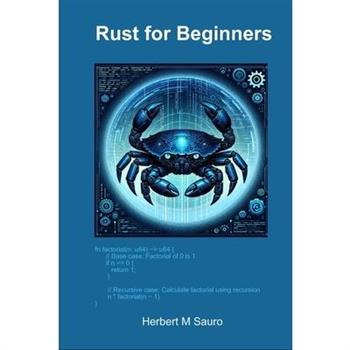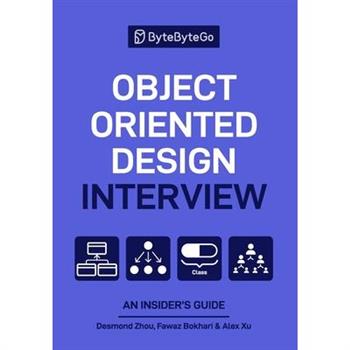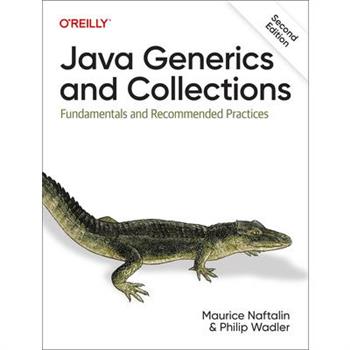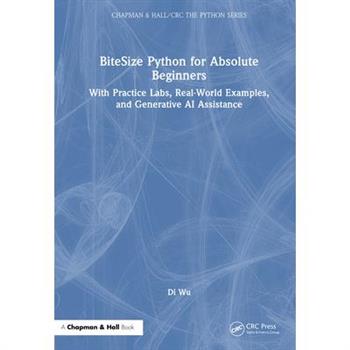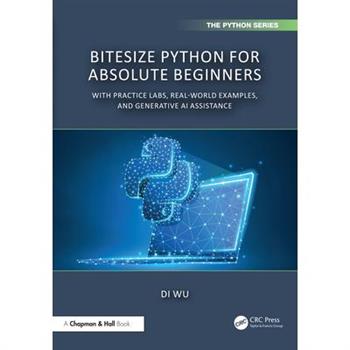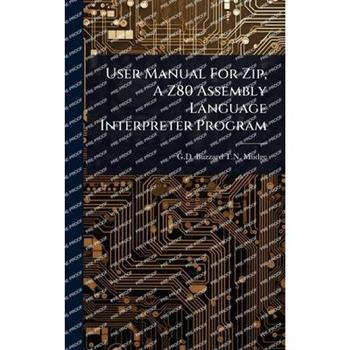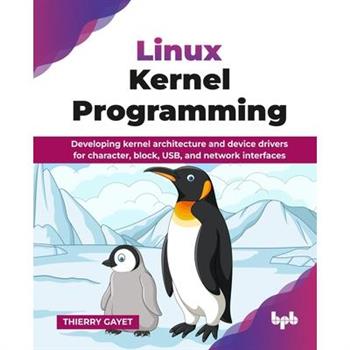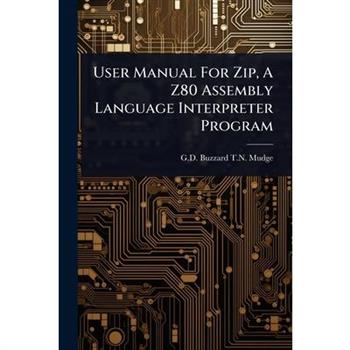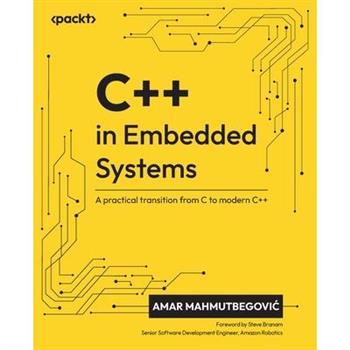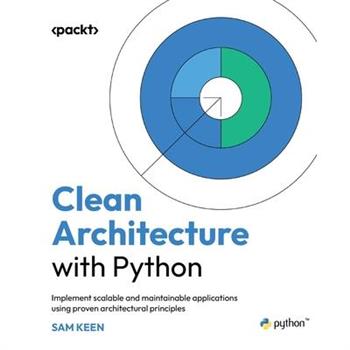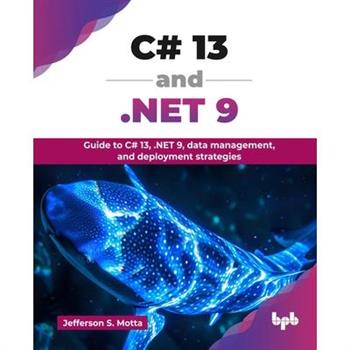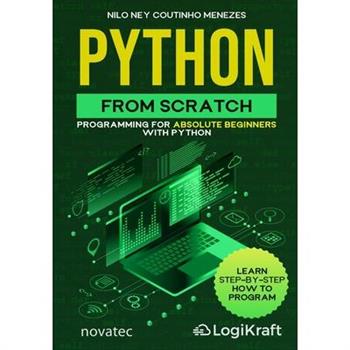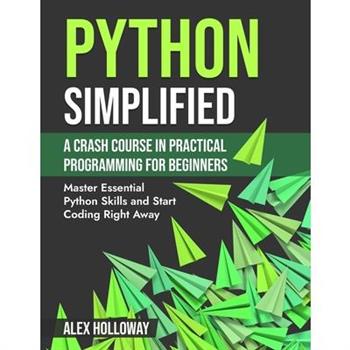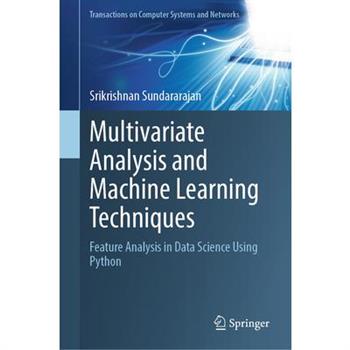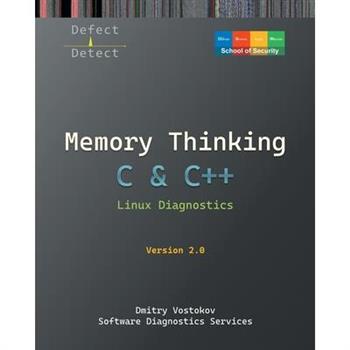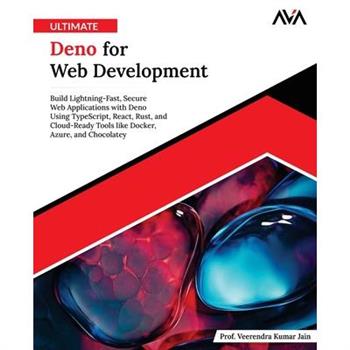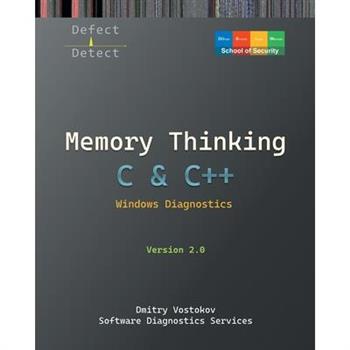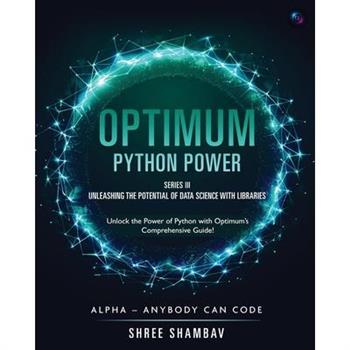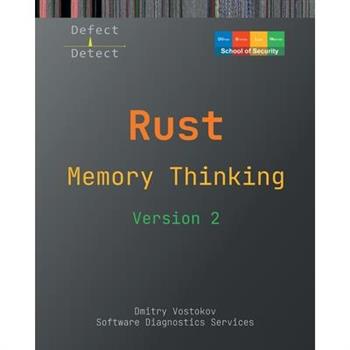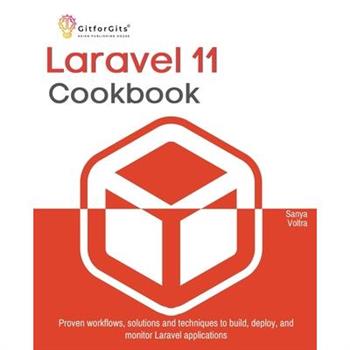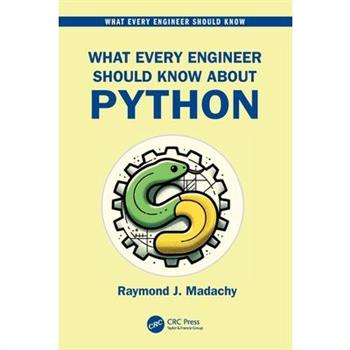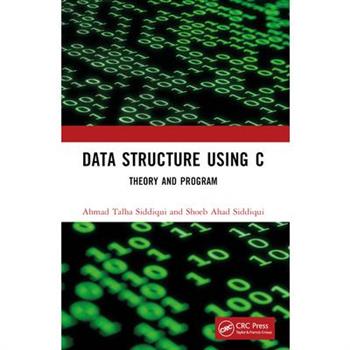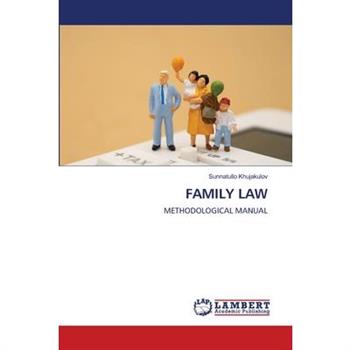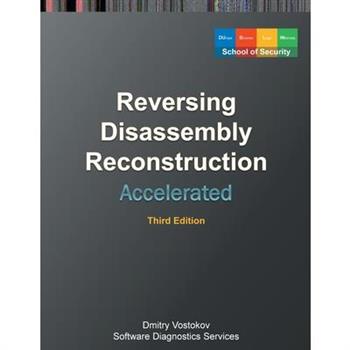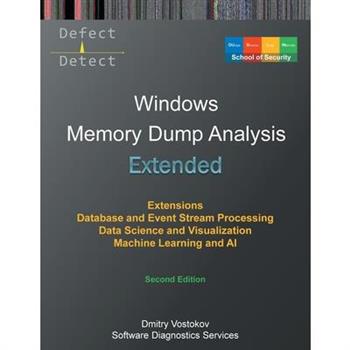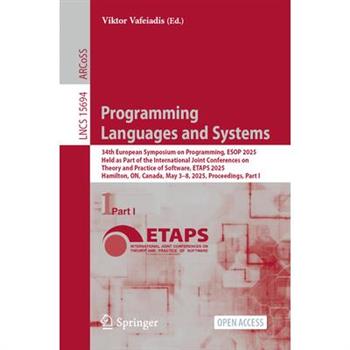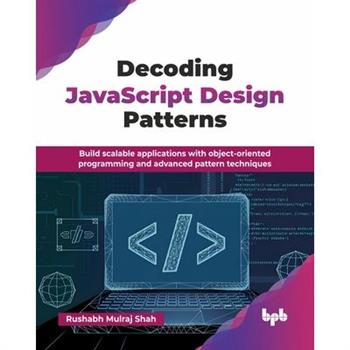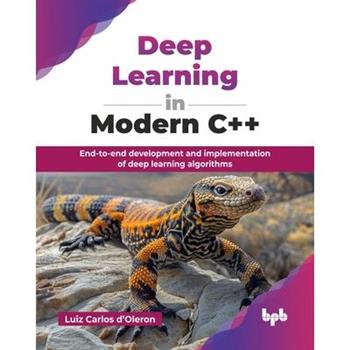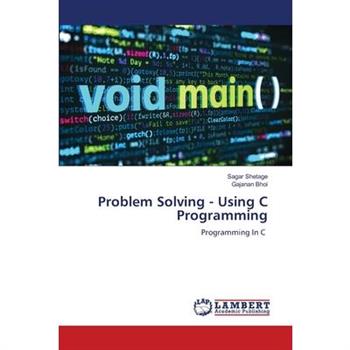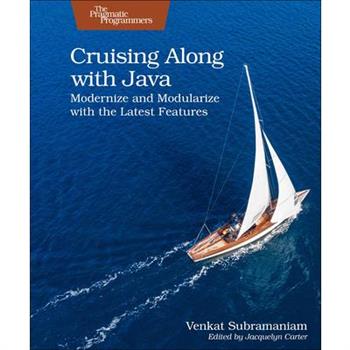Rust for Beginners
This is an introductory book on Rust for beginners. Rust introduces a number of new paradigms into programming, which makes Rust more difficult to learn than it otherwise would be. Why yet another book on Rust. Surely there are enough books on the market? Plus, we have the great `The Rust Programming Language' at the Rust website itself, and many other websites, videos, and tutorials online. This is a book that was the result of a complete beginner starting out with Rust. Its purpose is to help others get started. It's not comprehensive but is enough to get you started and more.
Object Oriented Design Interview
Object-oriented design interviews have become increasingly popular in technical hiring. This shift reflects companies' growing emphasis on skills that align with real-world software development. OOD interviews are important at companies like Amazon, Bloomberg, and Uber, serving as a practical coding exercise. These interviews test your ability to build logical, maintainable systems and gauge how effectively you apply object-oriented design principles and patterns.This book helps you prepare with the most up-to-date view on OOD interviews. It covers the basics, a complete walkthrough, and examples of common OOD problems with solutions.What's inside?- An insider's take on what interviewers really look for and why.- A 4-step framework for solving any object-oriented design interview question.- 11 real object-oriented design interview questions with detailed solutions.- 133 detailed diagrams explaining system architectures and workflows.Table of ContentsChapter 1 What is an Object-Oriented Design (OOD) Interview?Chapter 2 A Framework for the OOD InterviewChapter 3 OOP FundamentalsChapter 4 Parking Lot SystemChapter 5 Movie Ticket Booking SystemChapter 6 Unix File Search SystemChapter 7 Vending Machine SystemChapter 8 Elevator SystemChapter 9 Grocery Store SystemChapter 10 Tic-Tac-Toe GameChapter 11 Blackjack GameChapter 12 Shipping Locker SystemChapter 13 Automated Teller Machine (ATM) SystemChapter 14 Restaurant Management System
Java Generics and Collections
Java Generics and Collections has been the go-to guide to generics for more than a decade. This second edition covers Java 21, providing a clear guide to generics from their most common uses to the strangest corner cases, giving you everything you need to know to use and write generic APIs effectively. It covers the collections library thoroughly, so you'll always know how and when to use each collection for any given task. And it explains stream processing, so you'll know which model to use and how they interoperate to get the best out of the platform library. This indispensable guide covers: Fundamentals of generics: type parameters and generic methods Subtyping and wildcards Generics and reflection Design patterns for generics Sets, queues, lists, maps, and their implementations Concurrent programming and thread safety with collections Performance of different collection implementations Best practices for using and extending the Java collections framework Design philosophy and comparison with other collections libraries
BiteSize Python for Absolute Beginners
This book allows readers to take a slow and steady approach to understanding Python code, explaining concepts, connecting programming with real-life examples, writing Python programs, and completing case studies. For absolute beginners with no prior programming experience, and individuals with busy schedules or limited time for studying.
BiteSize Python for Absolute Beginners
As an introduction to Python, this book allows readers to take a slow and steady approach to understanding Python code, explaining concepts, connecting programming with real-life examples, writing Python programs, and completing case studies.While there are many books, websites, and online courses about the topic, we break down Python programming into easily digestible lessons of less than 5 minutes each, following our BiteSize approach. Each lesson begins with a clear and short introduction to the topic. This gives you a strong base to start from and gets you ready for deeper learning. Then, you will see coding demonstrations that show the ideas discussed. These examples are simple and useful, helping you really understand the concepts. You'll then practice tasks at different difficulty levels, so you can test your knowledge and increase your confidence. You'll also play with case studies to solve real-world problems. Tips are included to show how you can incorporate generative AI into your learning toolkit, using it for feedback, practice exercises, code reviews, and exploring advanced topics. Recommended AI prompts can help you identify areas for improvement, review key concepts, and track your progress.This book is designed for absolute beginners with no prior programming experience. It is ideal for individuals with busy schedules or limited time for studying.
User Manual For Zip, A Z80 Assembly Language Interpreter Program
This user manual provides comprehensive documentation for "ZIP", a Z80 assembly language interpreter program. Written by G.D. Buzzard and T.N. Mudge, this manual serves as an essential guide for programmers and computer science enthusiasts seeking to understand and utilize the ZIP interpreter. The manual details the structure, function, and operation of the interpreter, offering practical guidance on its use. It will be a valuable resource for those studying assembly language programming, computer architecture, or the history of computing. Providing detailed explanations and examples, this manual enables users to effectively leverage the ZIP interpreter for a range of programming tasks.This work has been selected by scholars as being culturally important, and is part of the knowledge base of civilization as we know it. This work was reproduced from the original artifact, and remains as true to the original work as possible. Therefore, you will see the original copyright references, library stamps (as most of these works have been housed in our most important libraries around the world), and other notations in the work.This work is in the public domain in the United States of America, and possibly other nations. Within the United States, you may freely copy and distribute this work, as no entity (individual or corporate) has a copyright on the body of the work.As a reproduction of a historical artifact, this work may contain missing or blurred pages, poor pictures, errant marks, etc. Scholars believe, and we concur, that this work is important enough to be preserved, reproduced, and made generally available to the public. We appreciate your support of the preservation process, and thank you for being an important part of keeping this knowledge alive and relevant.
Linux Kernel Programming
Linus Torvald released the first version of a kernel in 1991, inspired at the time by both proprietary Unix and the Minix system. Thirty-four years later, this system has evolved with stability and robustness, making it almost indispensable for the DevSecOps community. The Linux kernel forms the robust core of countless systems, from embedded devices to vast data centers, driving unparalleled power and flexibility. This book is your essential guide to deeply understanding this fundamental component and mastering the art of developing high-performance kernel-level codeThis book meticulously details the kernel's history, architectural evolution, and custom build processes. You will master device driver fundamentals, distinguishing user from kernel space, and understanding the Linux Device Model (LDM). It explores Linux Security Modules, intricate kernel memory management, and various vital communication interfaces like I2C, SPI, SERIAL, PCI, and RTC. The guide concludes with task/process management, real-time concepts, and essential kernel debugging and profiling.By the end of this book, you will be well-equipped to confidently develop, optimize, and debug kernel-level code. This empowers you to build custom Linux systems, craft efficient device drivers, and troubleshoot complex issues, ready to tackle advanced Linux system programming challenges. You will also be able to better understand this system and develop your own drivers or low-level developments for it.WHAT YOU WILL LEARN● GNU/Linux kernel history, feature evolution, and licensing.● Understand and develop your character and block drivers.● Develop new file systems.● Manage your systems by communicating with the USB protocol.● Debug your drivers, your kernel, or any other module in the kernel space.● Understand the layout of the Linux device model.WHO THIS BOOK IS FORThis book is for software engineers looking to understand the Linux kernel's architecture, modify it, and develop custom modules. It also supports project managers, team leaders, and technical managers seeking a clear view of kernel development and capabilities. CISOs and IT managers will benefit from insights into kernel limitations, vulnerabilities, and security measures, such as Linux Security Modules (LSMs).
User Manual For Zip, A Z80 Assembly Language Interpreter Program
This user manual provides comprehensive documentation for "ZIP", a Z80 assembly language interpreter program. Written by G.D. Buzzard and T.N. Mudge, this manual serves as an essential guide for programmers and computer science enthusiasts seeking to understand and utilize the ZIP interpreter. The manual details the structure, function, and operation of the interpreter, offering practical guidance on its use. It will be a valuable resource for those studying assembly language programming, computer architecture, or the history of computing. Providing detailed explanations and examples, this manual enables users to effectively leverage the ZIP interpreter for a range of programming tasks.This work has been selected by scholars as being culturally important, and is part of the knowledge base of civilization as we know it. This work was reproduced from the original artifact, and remains as true to the original work as possible. Therefore, you will see the original copyright references, library stamps (as most of these works have been housed in our most important libraries around the world), and other notations in the work.This work is in the public domain in the United States of America, and possibly other nations. Within the United States, you may freely copy and distribute this work, as no entity (individual or corporate) has a copyright on the body of the work.As a reproduction of a historical artifact, this work may contain missing or blurred pages, poor pictures, errant marks, etc. Scholars believe, and we concur, that this work is important enough to be preserved, reproduced, and made generally available to the public. We appreciate your support of the preservation process, and thank you for being an important part of keeping this knowledge alive and relevant.
Test Automation with Nightwatch.js
Given the fast-paced and dynamic nature of today's web development landscape, test automation is essential for maintaining quality across dynamic applications. Nightwatch.js stands as a powerful yet accessible end-to-end testing framework that elegantly bridges the gap between testing complexity and implementing simplicity, making automated quality assurance achievable for developers at all skill levels.This book guides readers through the complete Nightwatch.js journey, beginning with fundamental concepts and practical setup in Visual Studio Code. Early chapters establish a solid foundation in element identification strategies and web interactions, before addressing critical challenges of synchronization in modern applications. The middle sections explore practical testing techniques through assertions. The book covers handling complex HTML elements, such as forms, tables, dropdowns, and new windows, before moving on to advanced topics, including browser logs, performance monitoring, network requests, screenshots, and intricate keyboard and mouse actions. These are all structured within the Page Object Model pattern for maintainability. The final sections focus on professional-grade implementation aspects, including data management with Excel and CSV integration, logging systems, and execution in cloud environments like BrowserStack for cross-browser verification.By the end of this book, readers will be highly competent in building reliable, maintainable, and scalable test automation suites with Nightwatch.js. They will develop practical skills in JavaScript-based automation, gain understanding of testing best practices, and acquire expertise to implement scalable frameworks, enhancing development workflows and delivering higher-quality software products.WHAT YOU WILL LEARN● Nightwatch.js fundamentals and integration with Visual Studio Code for effective test setup.● Diverse interactions with web elements using Nightwatch.js's command interface.● Run Nightwatch.js tests on BrowserStack; integrate with GitHub Actions.● Implement testing approaches using assertions and complex element handling.WHO THIS BOOK IS FORThis book is intended for beginners new to test automation and experienced testers transitioning to JavaScript-based frameworks, web developers, and QA engineers, who seek to adopt modern automation practices. Development teams looking to implement efficient QA processes will find practical and applicable solutions.
Clean Architecture with Python
Future-proof your Python projects by creating flexible code that adapts to changing requirements with the help of this hands-on guide to achieving Clean ArchitectureKey Features: - Learn Clean Architecture through a series of real-world, code-centric examples and exercises- Optimize system componentization, significantly reducing maintenance burden and overall complexity- Apply Clean Architecture concepts confidently to new Python projects and legacy code refactoring- Purchase of the print or Kindle book includes a free PDF eBookBook Description: In the rapidly evolving tech industry, software applications struggle to keep pace with changing business needs, leaving developers grappling with complex codebases that resist change, ultimately reducing productivity and increasing technical debt. Clean Architecture with Python offers a powerful approach to address these challenges. Drawing from his extensive experience architecting cloud-native systems, Sam Keen helps you transform complex architectural challenges into digestible, implementable solutions.This book teaches essential principles for effective development, emphasizing the Pythonic implementation of Clean Architecture. Through practical examples, you'll learn how to create modular, loosely coupled systems that are easy to understand, modify, and extend. The book covers key concepts such as the Dependency Rule, separation of concerns, and domain modeling, all tailored for Python development.By the end of this book, you'll be able to apply Clean Architecture principles effectively in your Python projects. Whether you're building new systems or managing existing ones, you'll have the skills to create more maintainable and adaptable applications. This approach will enhance your ability to respond to changing requirements, setting you up for long-term success in your development career.What You Will Learn: - Apply Clean Architecture principles idiomatically in Python- Implement domain-driven design to isolate core business logic- Apply SOLID principles in a Pythonic context to improve code quality- Structure projects for maintainability and ease of modification- Develop testing techniques for cleanly architected Python applications- Refactor legacy Python code to adhere to Clean Architecture principles- Design scalable APIs and web applications using Clean ArchitectureWho this book is for: If you're a Python developer struggling with maintaining and extending complex codebases, this book is for you. It's ideal for intermediate developers looking to enhance their architectural skills as well as senior developers seeking to formalize their knowledge of Clean Architecture in Python. While beginners can benefit, prior experience with Python and object-oriented programming is recommended.Table of Contents- Clean Architecture Essentials: Transforming Python Development- SOLID Foundations: Building Robust Python Applications- Type-Enhanced Python: Strengthening Clean Architecture- Domain-Driven Design: Crafting the Core Business Logic- The Application Layer: Orchestrating Use Cases- The Interface Adapters Layer: Controllers and Presenters- The Frameworks and Drivers Layer: External Interfaces- Implementing Test Patterns with Clean Architecture- Adding Web UI: Clean Architecture's Interface Flexibility- Implementing Clean Architecture Observability: Monitoring and Verification- Legacy to Clean: Refactoring Python for Maintainability- Your Clean Architecture Journey: Next Steps
C# 13 and .NET 9
DESCRIPTION C# and .NET continue to evolve as powerful, versatile tools for building modern applications, driving innovation across various platforms. This book focuses on the latest advancements, empowering you to develop robust and high-performing software solutions.The book leads you from setting up your development environment and understanding C# fundamentals, including new C# 13 language features, to mastering object-oriented programming with classes, inheritance, and interfaces. You will then learn to utilize the extensive .NET framework's base class library, handling file I/O, and efficiently managing data with Entity Framework Core and LINQ. Finally, you will learn modern web development with ASP.NET Core, exploring Razor Pages, MVC, RESTful APIs, and Blazor for interactive UIs, before learning crucial packaging and deployment strategies.By the end of this book, you will have a strong command of C# 13 and .NET 9, empowering you to design, develop, and deploy a wide range of modern, cross-platform applications with the latest tools and best practices.WHAT YOU WILL LEARN● New language features of C# 13.● Build cross-platform applications for Windows, Mac, and Linux.● Design scalable web applications with ASP.NET Core.● Leverage Entity Framework and LINQ for data.● Create interactive web UIs using Blazor.● Implement professional development workflows in Visual Studio.WHO THIS BOOK IS FORThis book is designed for beginners in C# programming, as well as mid-level and senior programmers, software engineers, web developers, systems architects, and IT professionals looking to expand their technical toolkit. It covers both basic and advanced techniques, serving as a comprehensive guide to the world of C# and .NET, making it valuable for everyone from students to enterprise solution developers.
Python from Scratch
Python from Scratch is the perfect starting point for anyone new to programming who wants to learn independently. It's also an excellent textbook for introductory computer programming courses where students need to master both fundamental programming techniques and the Python language.What You'll Learn: This comprehensive guide covers all essential programming concepts with clear examples and practical exercises: Core Programming Fundamentals: expressions, variables, loops, conditional statementsData Structures: lists, dictionaries, setsAdvanced Topics: functions, file handling, classes, objectsDatabase Integration: SQL database programming with SQLite 3Text Processing: regular expressionsGUI Development: graphical interfaces with tkinterWhy This Book Works: Mathematical concepts are explained alongside programming knowledge, making exercises more accessible for beginners. While emphasizing clear, simple examples to build a solid foundation, the book also introduces advanced computing features for readers seeking additional challenges.Although focused on Python 3.13 or higher, this book prioritizes teaching programming principles and logic, providing a broad foundation that serves readers regardless of their chosen language. Programming concepts are introduced gradually through simpler examples, with more sophisticated Python features demonstrated as you progress.Additional Resources: The accompanying website provides instructional videos, solved problems, and frequently asked questions. All software used in the book is available for free download.About the AuthorNilo Ney Coutinho Menezes is a software developer specializing in parallel, asynchronous, and distributed systems programming. In 2020, the Python Software Foundation recognized him as a Fellow for his significant contributions to promoting Python and fostering programming communities in Brazil's North Region.As a researcher, Nilo has contributed to multiple European projects, optimizing simulation, mobile telephony, and network systems. He has successfully led software development teams across various industries in Manaus, Brazil, and founded LogiKraft in 2018.Currently based in Belgium, Nilo consults on scalable systems development and cloud computing solutions. He holds a Master's degree in Informatics (Networks) and a Bachelor's degree in Data Processing from the Federal University of Amazonas.A computer programming professor since 1994, Nilo has distilled decades of teaching and industry experience into this comprehensive, accessible guide for programming beginners.
Python Standard Library
An extremely handy programmer's standard library reference that is as durable as it is portable. This 6 page laminated guide includes essential script modules used by developers of all skill levels to simplify the process of programming in Python. This guide is all script and is organized to find needed script quickly. As with QuickStudy reference on any subject, with continued reference, the format lends itself to memorization. Beginning students or seasoned programmers will find this tool a perfect go-to for the at-a-glance script answer and memory jog you might need. At this price and for the bank of script included it's an easy add to your programmer's toolbox.6 page laminated guide includes: General FunctionalityDate/Time ProcessingOS ModuleFile OperationsProcess ControlEnvironment Variables & System InfoProperties of the DirEntry Class: Use DirEntry_Instance.xThe pathlib Module: Use pathlib.xProperties of the Purepath Class: PurePath_Instance.xProcess & Thread ManagementDebugging FunctionalityPDB ModuleDebugging for the PDB ModuleMathematic and Numeric OperationsMath ModuleIterable and Iterator OperationsCollections ModuleClasses of the Collections ModuleItertools Module
Python Programming Language
Created for developers of all skill levels to find the essentials of common operations combined with the fastest reference guide for writing code. This handy 6 page laminated guide is a concise desktop reference to key concepts behind Python logic, syntax, and operation. Expertly written to concisely cover the planning of a program written in Python, assigning your first variables, importing other libraries, formatting output strings, and creating classes. Beginning students or seasoned programmers will find this tool a perfect go-to for reference to those core concepts. This unbeatable value makes it easy to add this reference to your programmer's toolbox.6 page laminated guide includes: History & Key FeaturesLanguage StructureNaming ConventionsVariables & Data TypesCommon Data TypesType Hints & Static Typing (Python 3.5+)UnionsReserved KeywordsImporting ModulesConsole Input & OutputDisplay OutputConvert OutputControl Print BehaviorStringsConcatenation & RepetitionGet String LengthAccess Characters & SlicesEscape CharactersString FormattingOperatorsArithmetic OperatorsComparison OperatorsLogical OperatorsAssignment OperatorsBitwise OperatorsMembership OperatorsIdentity OperatorsAssignment Expressions (Python 3.8+)StatementsSimple StatementsCompound StatementsExpressions vs. StatementsMultiline StatementsFunctionsVariable-Length ArgumentsFlow ControlBasic if StatementThe if ... else StatementUsing if ... elif ... elseOne-Line if StatementCheck Multiple ConditionsStructural Pattern Matching (Python 3.10+)asyncio for Asynchronous Programming (Python 3.7+)LoopingObject-Oriented Programming (OOP)Classes & ObjectsInheritancePolymorphismMethod Overridingself Type (Python 3.11+)dataclasses Module (Python 3.7+)Generators
Multivariate Analysis and Machine Learning Techniques
This book offers a comprehensive first-level introduction to data analytics. The book covers multivariate analysis, AI / ML, and other computational techniques for solving data analytics problems using Python. The topics covered include (a) a working introduction to programming with Python for data analytics, (b) an overview of statistical techniques - probability and statistics, hypothesis testing, correlation and regression, factor analysis, classification (logistic regression, linear discriminant analysis, decision tree, support vector machines, and other methods), various clustering techniques, and survival analysis, (c) introduction to general computational techniques such as market basket analysis, and social network analysis, and (d) machine learning and deep learning. Many academic textbooks are available for teaching statistical applications using R, SAS, and SPSS. However, there is a dearth of textbooks that provide a comprehensiveintroduction to the emerging and powerful Python ecosystem, which is pervasive in data science and machine learning applications. The book offers a judicious mix of theory and practice, reinforced by over 100 tutorials coded in the Python programming language. The book provides worked-out examples that conceptualize real-world problems using data curated from public domain datasets. It is designed to benefit any data science aspirant, who has a basic (higher secondary school level) understanding of programming and statistics. The book may be used by analytics students for courses on statistics, multivariate analysis, machine learning, deep learning, data mining, and business analytics. It can be also used as a reference book by data analytics professionals.
Memory Thinking for C & C++ Linux Diagnostics
Solid C and C++ knowledge is a must to fully understand Linux diagnostic artifacts, such as core memory dumps, and perform diagnostic, forensic, and root cause analysis beyond listing backtraces. This full-color reference book is a part of the Accelerated C & C++ for Linux Diagnostics training course organized by Software Diagnostics Services. The text contains slides, brief notes highlighting particular points, and source code illustrations. In addition to new topics, the second edition adds 45 projects with more than 5,500 lines of code. The book's detailed Table of Contents makes the usual Index redundant. We hope this reference is helpful for the following audiences: C and C++ developers who want to deepen their knowledgeSoftware engineers developing and maintaining products on Linux platformsTechnical support, escalation, DevSecOps, cloud and site reliability engineers dealing with complex software issuesQuality assurance engineers who test software on Linux platformsSecurity and vulnerability researchers, reverse engineers, malware and memory forensics analysts
Building a Debugger
Master the inner workings of your x64 Linux system and expand your OS expertise by writing your very own debugger using C++. If debuggers seem like magic to you, there is no better way to demystify them than to write your own. This book will show you exactly how to do it, walking you through the entire process of building a debugger for x64 Linux systems using C++. As go from an empty filesystem folder to a fully fledged debugger capable of setting breakpoints, stepping through code, manipulating variables, and more, you'll learn how to: Attach to a processRead and write to registersSet hardware and software breakpointsOutput disassemblySupport multithreading and other tasksAs you add features to your debugger, you'll also pick up a wealth of knowledge about operating systems, compilers, software testing, and low-level programming that you can use in your day-to-day development.
Ultimate Deno for Web Development
Master Modern Web App Development with Deno, TypeScript, and Rust Book DescriptionDeno is a modern, secure runtime for JavaScript and TypeScript, offering developers a simplified, efficient way to build high-performance web applications with built-in tooling and a robust standard library. In Ultimate Deno for Web Development, you'll dive deep into the Deno ecosystem-from setting up the runtime and understanding its architecture to mastering TypeScript, integrating Rust modules, and leveraging Deno's security-first execution model. You'll progressively build full-stack applications using modern tools like React, Next.js, and Visual Studio Code, while learning to manage dependencies with Chocolatey and deploy seamlessly with Docker and Microsoft Azure. Real-world examples guide you through creating RESTful APIs, managing users, implementing robust testing strategies, and preparing your applications for production. Each chapter builds upon the last, ensuring a seamless learning journey from fundamentals to deployment. Whether you're a student, freelancer, or professional developer, this book equips you to harness Deno's full potential and build secure, scalable web applications with confidence. Don't get left behind-step into the future of web development with Deno today. Table of Contents1. Introduction to Deno-Based Web Development2. The Deno Toolchain Ecosystem, Components, and Architecture3. TypeScript, JavaScript, and Rust4. Introduction to Node.js and Deno versus Node.js5. Using Visual Studio Code6. Standard Library, Rust, and LSP7. The Stateful of Web Frameworks on Deno8. React, HTML, and Next.js9. Using Microsoft Azure with Deno10. Deno Web Development Using Chocolatey11. Adding Users and Migrating to Oak12. Testing in Deno13. Web (HTTP) Server14. Deploying Deno Applications, Websites and Projects Index
Intelligent Explosion
The rapid advancement of artificial intelligence (AI) is fundamentally reshaping every facet of human life, from education and employment to security and governance. Intelligent Explosion explores the dual nature of AI-as both a transformative force for progress and a formidable challenge that societies must navigate. This book delves into AI's impact on industries, the ethical dilemmas it raises, and the potential risks of an unchecked AI revolution. A key theme of this work is the evolving job market in an AI-driven world. While AI and automation displace traditional roles, they also create new opportunities in emerging industries.
Learn C# with Visual Studio 2022
DESCRIPTION C# and Visual Studio 2022 are foundational technologies for developing a wide range of applications on the .NET platform, from desktop to web. This book is your practical guide to mastering these tools, designed to take you from understanding the basics to building real-world solutions effectively.This book starts with setting up the IDE, and covers core programming basics like syntax rules, variables, data types, operators, control structures (like if-else statements and loops), exception handling, and methods. You will learn essential object-oriented programming (OOP) concepts such as classes, objects, encapsulation, inheritance, polymorphism, and abstraction. Progressing beyond fundamentals, you will learn efficient data management with collections, generics, and LINQ, handling events using delegates and events, and data persistence via file and stream I/O. The journey continues with file and stream input/output operations, enhancing application responsiveness with asynchronous programming, and delving into advanced concepts like reflection and dynamic programming. Finally, you will gain hands-on experience in building user-friendly Windows desktop applications with Windows Forms and WPF, and creating modern web applications and services using ASP.NET Core and Blazor, including building interactive client-side web UIs with C#.By mastering these skills, you will possess a solid understanding of C# and the capabilities of Visual Studio 2022 to tackle real-world programming challenges, develop robust, scalable, and maintainable solutions, enhancing job stability in the C# development market.WHAT YOU WILL LEARN● Write C# programs using Visual Studio 2022 effectively.● Apply core OOP concepts in C#.● Manage data structures and perform queries using collections and LINQ.● Build desktop applications with Windows Forms and WPF frameworks.● Develop modern web applications using ASP.NET Core and Blazor.WHO THIS BOOK IS FORThis book is for software developers, students learning C#, and professionals looking to adopt .NET development using Visual Studio 2022. It is tailored for individuals new to programming or those with some C# background, aiming to expand their expertise using Visual Studio 2022.
Memory Thinking for C & C++ Windows Diagnostics
Solid C and C++ knowledge is a must to fully understand Windows diagnostic artifacts, such as memory dumps, and perform diagnostic, forensic, and root cause analysis beyond listing stack traces, DLLs, and driver information. This full-color reference book is a part of the Accelerated C & C++ for Windows Diagnostics training course organized by Software Diagnostics Services. The text contains slides, brief notes highlighting particular points, and illustrative source code fragments. The second edition added 45 Visual Studio projects with more than 5,500 lines of code. The book's detailed Table of Contents makes the usual Index redundant. We hope this reference is helpful for the following audiences: C and C++ developers who want to deepen their knowledgeSoftware engineers developing and maintaining products on Windows platformsTechnical support, escalation, DevSecOps, cloud and site reliability engineers dealing with complex software issuesQuality assurance engineers who test software on Windows platformsSecurity and vulnerability researchers, reverse engineers, malware and memory forensics analysts
Optimum - Python Power - Series III - Unleashing the Potential of Data Science with Libraries
In the ever-evolving field of data science, Python libraries are indispensable tools, offering robust capabilities to streamline complex processes and solve real-world challenges. Whether you're diving into data manipulation, performing statistical analysis, exploring machine learning, or crafting insightful visualizations, these libraries are the backbone of modern data science workflows.What's InsideFoundations of Data Science: Start your journey with the core principles, building a strong base using the Python Standard Library to kickstart your data-driven projects.Numerical Computing with NumPy: Gain efficiency in handling arrays, executing mathematical operations, and solving linear algebra problems seamlessly.Data Manipulation with Pandas: Master the art of managing structured data, cleaning and preprocessing datasets, and conducting exploratory data analysis to uncover hidden insights.Data Visualization with Matplotlib and Seaborn: Learn to create compelling plots, charts, and graphs that effectively communicate your data-driven findings.Scientific Computing with SciPy: Explore a comprehensive toolkit for scientific and mathematical computations, enabling more in-depth analysis.Machine Learning with Scikit-learn: Step into the realm of predictive modelling and machine learning, applying cutting-edge techniques to real-world data.This book is tailored to help you think critically and solve real-world data challenges, making it an invaluable resource on your journey to becoming a proficient data scientist.
Memory Thinking for Rust
Memory Thinking for Rust reviews memory-related topics from the perspective of software structure and behavior analysis and teaches Rust language aspects in parallel while demonstrating relevant code internals on Windows (x64) and Linux (x64 and ARM64) platforms: Relevant language constructsMemory layout of structs and enumsReferences, ownership, borrowing, and lifecycleUnsafe pointersLocal, static, and dynamic memoryFunctions, closuresSmart pointersObject-oriented and functional featuresWindows and Linux specifics... and much moreThe new book edition updates and extends the existing topics, adding some missing from the first edition. The updated book also has a new format similar to the second edition of Memory Thinking books for C and C++.The book contains slides, brief notes highlighting particular points, and related source code with execution output. The following audiences may benefit from the book: Rust developers who want to deepen their knowledgeNon-C and C++ developers (for example, Java, Scala, Python) who want to learn more about pointer and reference internalsC and C++ developers who want to port their memory thinking to Rust quickly
Laravel 11 Cookbook
This book is packed with hands-on recipes that will empower you to overcome any real-world challenge you face when building, debugging, and deploying Laravel applications. There are so many advanced routing and controller patterns to explore, from dynamic URL parameters to resource controllers and custom JSON APIs. You'll be amazed at how your application responds precisely to user requests.You'll implement Laravel Breeze for user authentication, craft RBAC with middleware, add social logins via Socialite, and enforce two-factor authentication with Fortify against unauthorized access. With server-side validation, you can create custom validation rules with clear feedback, centralize exception handling, and set up real-time error monitoring with Laravel Pulse. You'll also learn to automate critical workflows-configuring queue drivers and background jobs, retrying failed tasks, scheduling recurring operations, and backing up databases and media. Once you do, you'll be able to automate analytical reporting, from custom shell scripts to scheduled generation of performance-insight summaries. And you'll tie it all into Laravel's Scheduler and Linux cron.In this book, you'll find ready-to-use solutions to the scenarios you face day to day. Whether you're dealing with broken migrations, N+1 queries, authentication gaps, missing alerts, or sluggish jobs, this book has you covered. It addresses the most common pain points in Laravel development without claiming to cover every possible edge case. Instead, it gives you proven recipes that let you focus on building features, confident that you have reliable fixes at your fingertips.Key LearningsAchieve mastery of the Linux-based Laravel setup: Let's dive into the world of PHP installation, Composer, file permissions, and IDE configuration!Build dynamic routes, resource controllers, and Blade views for robust request handling.Protect your applications with Breeze authentication, role-based middleware, Socialite logins, and two-factor auth.Discover the magic of Eloquent models, one-to-many and many-to-many relationships, migrations, and seed realistic test data.Optimize database performance using eager loading, selective column queries, and proper indexing strategies.Take advantage of server-side validation, custom rules, and centralized exception handling for unparalleled data integrity.Keep an eye on errors in real time with the amazing Laravel Pulse, Debugbar, and Telescope dashboards.Offload your heavy tasks with ease using job queues, retry strategies, and Laravel Scheduler automation.Securely store, process, resize, and stream media using Laravel filesystem and Intervention Image.Automate backups, generate analytical reports, and integrate custom shell scripts with Laravel commands.Table of ContentSetting up PHP and Laravel EnvironmentAdvanced Routing, Controllers, and Blade ViewsAuthentication and Authorization PracticesDatabase Models, Migrations, and Query OptimizationRobust Data Validation and Error ManagementAlerts, Notifications, and Performance MonitoringJob Queues and Background ProcessesFile Storage, Media Management, and ProcessingScheduling, Automation, and Backup Tasks
What Every Engineer Should Know about Python
This book provides engineering students and practitioners with a simple and practical introduction to Python for technical programming and other empowering uses for engineering and scientific work, without computer science jargon.
Data Structure Using C
This book explains different concepts of data structures using C. The topics discuss the theoretical basis of data structures as well as their applied aspects.
Family Law
Family law is one of the most essential branches of legal studies, governing the relationships between individuals in matters such as marriage, divorce, child custody, adoption, and inheritance. It plays a crucial role in ensuring the rights and responsibilities of family members are protected, resolving disputes, and maintaining harmony within society. Given its importance, a clear understanding of family law terminology is necessary for legal professionals, students, and individuals involved in legal proceedings.This book, Family Law, serves as a comprehensive dictionary providing key legal terms used in family law, accompanied by their Uzbek translations, English definitions, and practical sentence examples. It is designed to help legal practitioners, scholars, and students navigate the complexities of family law with ease and confidence. Whether you are a lawyer handling family-related cases, a student studying law, or an individual seeking clarity on legal matters, this book will provide you with the essential knowledge needed to understand and use family law terminology effectively.
ESRI Advanced Guide to Python in ArcGIS
Solving complex geospatial problems and delivering solutions has never been easier.Ready to take your Python knowledge to the next level? Esri Advanced Guide to Python in ArcGIS guides working GIS professionals through integrating Python with ArcGIS capabilities with increasing complexity through each consecutive chapter. Every chapter includes a project that teaches technical skills and problem-solving applicable to practical, job-focused assignments, including understanding client needs, performing market analytics, and managing ArcGIS Online organizations. Esri Advanced Guide to Python in ArcGIS uses step-by-step tutorials with an informal, conversational style of writing so you can easily follow and immediately apply the skills explained. Topics include: Designing effective GIS Python solutions ArcPy and ArcGIS API for Python basics Using imagery and GeoAI for advanced analysis Object-oriented programming Delivering work in various formats: Python scripts, Jupyter Notebook, ArcGIS Pro tools, geoprocessing services, and web applications Data engineering and manipulation techniques Managing ArcGIS Enterprise, ArcGIS Online, and other portal administration Perfect for intermediate to advanced programmers looking to enhance their GIS capabilities, Esri Advanced Guide to Python in ArcGIS will quickly help you become skilled at using Python for geospatial solutions and become more proficient and capable in your work.
Accelerated Disassembly, Reconstruction and Reversing
The book contains the full transcript of Software Diagnostics Services training. Learn disassembly, execution history reconstruction, and binary reversing techniques for better software diagnostics, troubleshooting, debugging, memory forensics, vulnerability, and malware analysis on x64 Windows platforms. The course uses a unique and innovative pattern-oriented analysis approach to speed up the learning curve. The training consists of practical, step-by-step, hands-on exercises using WinDbg and memory dumps. Covered more than 25 ADDR patterns, and many concepts are illustrated with Memory Cell Diagrams. The prerequisites for this training are a working knowledge of C and C++ programming languages. Operating system internals and assembly language concepts are explained when necessary. The primary audience for this training is software technical support and escalation engineers who analyze memory dumps from complex software environments and need to go deeper in their analysis of abnormal software structure and behavior. The course is also useful for software engineers, quality assurance and software maintenance engineers who debug software running on diverse computer environments, security researchers, malware, and memory forensics analysts who have never used WinDbg for analysis of computer memory. The third edition includes the x64 disassembly review and internals of C++ virtual function calls.
Tamil Computing
This book aims to outline current Tamil Computing technologies available around us in the present context to all participants like students, academicians, researchers and others who are interested in this field. Most of the books available in the market deal with Natural Language Processing, specifically English Language Processing. Therefore, the author hopes this book will be of utmost use to the undergraduate, postgraduate and researchers.This book provides an overall picture of Tamil Computing, covering different aspects. Specifically, starting with the basics of Tamil, Tamil Computing, Coding standards, fonts, keyboards, issues related to it, morphology, phonology, syntax, semantics and pragmatics of Tamil, Tools and resources and applications of Tamil Computing in detail.The purpose of this book is also to give an insight into Tamil Handwritten character recognition and Speech processing in detail. Automatic Speech Recognition in one of the critical issues in any language. Recognizing handwritten characters using a machine is necessary in today's modern world. A computer system should be intelligent enough to receive and interpret the handwritten input. These two aspects are explained in detail.This book elaborates on the existing corporate packages like MS-Office and its usage in Tamil, Database Processing and open Tamil. The book also explains input-outputting methods in detail with simple python programs. The use of the MS Windows Operating System is widespread worldwide in different languages. This book describes the practices of customization of MS Windows software for Tamil. Usage of the MS Windows Operating System is famous worldwide in other languages. This book has also added details concerning Indic Libraries and Large Language Models.
Extended Windows Memory Dump Analysis
The book contains the full Software Diagnostics Services training transcript with 25 hands-on exercises. This training course extends pattern-oriented analysis introduced in Accelerated Windows Memory Dump Analysis, Accelerated .NET Core Memory Dump Analysis, and Advanced Windows Memory Dump Analysis with Data Structures courses with: Surveying the current landscape of WinDbg extensions with analysis pattern mappingsWriting WinDbg extensions in C, C++, and Rust (new)Connecting WinDbg to NoSQL databasesConnecting WinDbg to streaming and log processing platformsQuerying and visualizing WinDbg output dataUsing Data Science, Machine Learning, and Gen AI for diagnostics and postmortem debugging (new)The new edition of the training updates existing exercises and includes new ones.Prerequisites: Working knowledge of WinDbg. Working knowledge of C, C++, or Rust is optional (required only for some exercises). Other concepts are explained when necessary.Audience: Software developers, software maintenance engineers, escalation engineers, quality assurance engineers, security and vulnerability researchers, malware and memory forensics analysts who want to build memory analysis pipelines.
Accelerated Linux Disassembly, Reconstruction and Reversing
The book contains the full transcript of Software Diagnostics Services training. Learn disassembly, execution history reconstruction, and binary reversing techniques for better software diagnostics, troubleshooting, debugging, memory forensics, vulnerability, and malware analysis on x64 (x86_64) and A64 (ARM64, AArch64) Linux platforms. The course uses a unique and innovative pattern language approach to speed up the learning curve. The training consists of practical step-by-step, hands-on exercises using GDB and Linux core memory dumps. Covered more than 25 ADDR patterns originally introduced for the x64 Windows platform, and many concepts are illustrated with Memory Cell Diagrams. The prerequisites for this training are a working knowledge of C and C++ programming languages. Operating system internals and assembly language concepts are explained when necessary. The primary audience for this training is software technical support and escalation engineers who analyze memory dumps from complex software environments and need to go deeper in their analysis of abnormal software structure and behavior. The course is also useful for software engineers, quality assurance, and software maintenance engineers who debug software running on diverse cloud and endpoint computer environments, SRE and DevSecOps, security and vulnerability researchers, and malware and memory forensics analysts who have never used GDB for analysis of computer memory. The book also features ADDR pattern descriptions summarized after each exercise. The second edition includes a review of relevant assembly language fundamentals and relevant differences between GCC and Clang.
The CMake Tutorial
Shortcut Your Path to Building C++ Code like a Pro Programmers know that horrible feeling. You're trying to achieve something that should be simple, and simply cannot figure out how to do it. Hours turn into days, and then finally you find the solution. And yes, that solution was simple. Big sigh of relief! That was me with CMake. Time and time again. CMake is a powerful build tool for C/C++, but can be an absolute pain to use. Scouring the internet for hours each time you need to modify your CMakelists.txt file is hard work. Even worse, you often end up learning the "wrong" (old) way of doing things. There are plenty of old and downright bad CMake tutorials and examples out there... It'll Save You Days (and possibly Months) I've taken everything I learnt, and distilled it down to the essentials. The "Learn Modern CMake by Example" book/course will save you days (and possibly months) of time and frustration, by teaching you the correct (modern) ways to perform the most common build tasks. It's the book/course that I wish I had when I was learning how to use CMake. Deliberately Short & Focused on Results The CMake Tutorial is deliberately short, and focused sharply on making CMake do what you need it to. It doesn't cover every nook and cranny (of CMake), nor does it bog you down with endless theory and backstory. Your time is valuable, so it's designed to get you up and running quickly. No drowning you with details on every single CMake feature (that's what the official documentation is for). It's got only the bits you're most likely to need, which have been organized for fast learning. Learn Without Breaking the Bank A CMake course could set you back $1350 USD. Yes, it's a valuable skill. The CMake Tutorial won't cost you anywhere near as much. Not even half! I know you won't be making the big bucks at the start of your career, and I also know what it's like to be scratching out a living. So, The CMake Tutorial has been priced so it's affordable to those who are getting started. What You'll Learn in The CMake Tutorial - CMakelists.txt files & how CMake works - Compiling multiple source files into one program - Using third-party libraries - Using non-CMake third-party libraries - Using pre-compiled third-party libraries - Choosing the C++ standard version, and other settings - Setting per-compiler flags - Creating static and dynamic libraries - Compiling debug and release versions - Tackling larger projects (multi-directory)
Python Automation for Dummies
Streamline Your Workflow and Boost Productivity with Python Automation In today's workplaces, there's a high demand for know-how on the Python programming language, especially for writing time-saving scripts that can simplify routine work tasks. Python Automation For Dummies delivers, with simple explanations of how you can use Python to automatically wrangle data files, manage media files, create shortcuts, find and organize web data, and even analyze social media for trends. With this easy-to-follow Dummies guide, you can upskill, expand your productivity, and speed up the process of generating data-driven insights. You'll even learn to enhance your Python automations with AI, for workflows that are faster and smarter. Review the basics of Python coding and follow steps for automating all sorts of tasks Manage large file sets, organize and analyze data, and speed up research processes Automate scheduling and other time-consuming tasks--and optimize work with AI Free up time and resources by automating routine work, so you can foucs on more important issues This is a great Dummies resource for Python developers interested in applying the popular coding language to make workflows more efficient.




